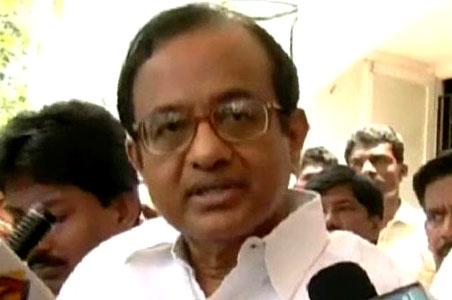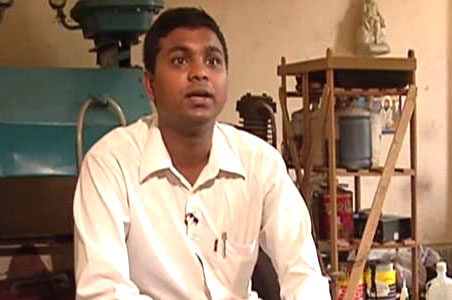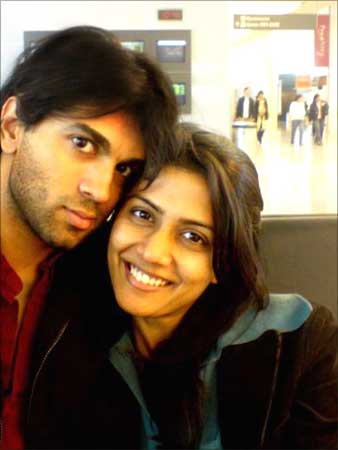P.V. Indiresan
Competition will work where there is no scarcity of any commodity. Evidently, the number of aspirants to colleges of similar quality is much larger than the number of seats available. It is this scarcity that is impelling the corruption, says P.V. INDIRESAN.

Competition by itself will not eliminate corruption. A couple of medical colleges in Tamil Nadu have been caught red-handed taking unauthorised money from applicants for admission. There is nothing really new about their story which is known to happen in many (if not in most) private institutions. The new minister for HRD wants to change the situation. The solution that has been offered is a High-Power body to regulate and oversee colleges. On the face of it, such a solution appears fine and reasonable. Is that really true?
We already have a High-Power body in the University Grants Commission which does have the responsibility to maintain high standards of admission as well as for ethics. If UGC could not maintain standards and ethics, what guarantee is there that yet another High-Power body will succeed? What guarantee is there that such a body, however high-powered it may be, will not be subverted the way the UGC has been?
Competition effect Not very long ago, we had corruption in the allotment of telephones and of cars. There are no such complaints any more. Competition is the reason why suddenly corruption collapsed and the number of telephones and of cars increased enormously. Similarly, should not competition act as a remedy for corruption in this case too? If so, considering there are thousands of professional colleges, why is that not happening in education?
Competition will work where there is no scarcity of any commodity. Evidently, the number of aspirants to colleges of similar quality is much larger than the number of seats available. It is this scarcity that is impelling the corruption.
In that case, will corruption vanish if there are no restrictions on the numbers of colleges? Possibly, yes. If the number of seats in medical colleges is in excess of the number of aspirants, theoretically, there should be no corruption at all. Unfortunately, college education is not like having a mobile. All mobiles of a particular type are identical; anybody who wants any particular model can get it. Likewise, if everyone who wants to study in any particular college can get admission, there will be no corruption. Unfortunately, that is not feasible; every college has a limit to the numbers it can admit. Hence, better colleges will have to reject many aspirants and that rejection can lead to corruption.
In other words, the system of education is such that competition by itself will not eliminate corruption. That is why regulation appears to be such a good idea. Unfortunately, a single regulator is a monopolist and is liable to suffer from all the ills of monopoly.
Ethical rules and anomaly Suppose we look at the issue from the context of money only: Why not have colleges that admit only on the basis of the fees the student is willing to pay? It legalises the practice that actually prevails in many professional colleges these days.
If colleges are given that freedom, the several billion dollars that our parents are spending every year to get their children educated abroad will virtually vanish. If Harvard and Stanford are willing to admit an Indian student on the basis of the fees the student is willing to pay, why should the University of Delhi or the IIT Madras refuse admission to the same student?
The fact is we are applying certain ethical rules in the education field that we do not apply elsewhere. A rich child can go to an expensive school, travel to school in a car, have dinners in Five-Star hotels, live in a grand bungalow and enjoy many comforts which a poor child cannot. Those luxuries are legal and accepted. However, when it comes to college education, that benefit is removed; the rich child has to compete with poorer ones (often on unequal grounds) and pay the same fees.
Private colleges are exploiting this anomaly. The country is aghast that they do so. It is not aghast when rich children go to better appointed schools — which no poor child can ever hope to attend. The result is the country loses — according to one estimate —– $5 billion a year with rich children studying abroad (and getting into trouble in countries such as Australia).
Changes in the UK system The UK had a reasonably equitable system till the 1970s: It selected bright students at age eleven and sent them to grammar schools where they got good quality education. The result was that till the 2000s, the top positions in various professions was quite democratic; children from both rich and poor families could rise to the top.
In the 1970s, the socialists removed the eleven-plus examination on the argument that it was unfair to “late developers”. The consequence was that the middle class and the richer families opted out of government schools and sent their children to private schools – and got them much better education. The result is that, in England, top positions are no longer democratic the way they used to be; children from poorer families have far fewer chances of rising to the top.
What should India do? As a matter of fact, family culture is important; middle class families inculcate an interest in education in their children which the poorer families often (but not always) do not. Hence, inherent IQ is important but a certain loss of IQ can be compensated by effort — which, mainly, middle-class families emphasise. Further, the moral of the English experience is that government schools cannot combine competent with less competent students. They are unable to draw an invisible line which private schools are able to draw even when they admit children mainly on the basis of money.
In that case, what should India do? Strictly speaking, the Supreme Court has ruled in the P A Inamdar case that private colleges can admit whoever they like. Unfortunately, recently, Justice Katju has re-affirmed the older Unnikrishnan judgement; he has allowed the Madhya Pradesh government to appropriate 42.5 per cent of the seats in private colleges.
As a result, only Maharashtra, Uttar Pradesh and Rajasthan permit full freedom to private colleges; all other States impose restrictions with Gujarat having the highest government quota of 75 per cent. One wonders how the Courts permit such disparity from one State to another.
The politics of education is such that it does not appear feasible for the government to provide easier access to richer children in private colleges. However, when parents are rich enough to send their children abroad, there is no restriction whatever! That is another anomaly the Courts do not seem to have taken into account.
Three options Suppose we have no restriction at all for the management quota. Then, any college interested in quality will find it necessary, in its own self-interest, to admit competent but poorer children at reduced, even no fees.
Only then will it have the academic quality to attract children who are both rich and quite competent. In fact, that is how institutions such as Harvard and Stanford have both high standards and the freedom to admit anyone they like.
India has now three options: (a) Retain existing system and take legal action against offending colleges that take money under the table; (b) install a new central regulator and expect it to discipline all 20,000 colleges and (c) try out an entirely new and self-regulating system on the basis of Public-Private Partnership.
(To be continued)
(This is 254th in the Vision 2020 series. The previous article appeared on June 8.)
(The author is former Director, IIT, Madras. blfeedback@thehindu.co.in)




 If you thought the hurdles to gainful employment for qualified professionals was a fringe phenomenon, think again.
If you thought the hurdles to gainful employment for qualified professionals was a fringe phenomenon, think again. Patience, entrepreneurship, innovation, integral thinking, eye for details and capacity to analyse as well as synthesise are some other attributes that will stand you in good stead. In today's world of electronic revolution one must update one's computer skills on a regular basis .
Patience, entrepreneurship, innovation, integral thinking, eye for details and capacity to analyse as well as synthesise are some other attributes that will stand you in good stead. In today's world of electronic revolution one must update one's computer skills on a regular basis .